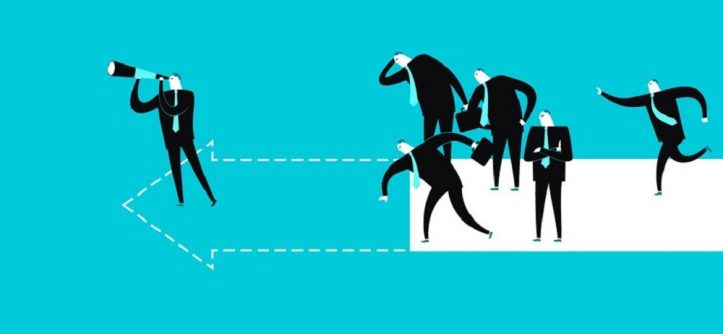Defining if a leader is better than another leader is a very difficult thing to do quantitatively. Leadership is a process of influence through which the leader manages the relationships between five elements …
- Personal skills;
- Aspirations of the followers;
- Culture of the organization in which it acts;
- Expectations of the interested parties;
- Community in which it operates.
What we can try to do instead is to understand what the best leaders do to be such and how they stand out from others. Let’s find out what the best leaders do.
The best leaders give the best to their people
A high-level leader always gives the best to his team and to the people who follow him, in these ways …
Growing up
People naturally follow leaders they consider worthy of respect because they are more advanced than themselves. For this reason, personal growth is directly proportional to influence and vice versa. If you want to get followers who follow you naturally, then you have to pay the price to improve and grow. To give the best to people, you need to increase your leadership skills. If you think of climbing up a narrow staircase, you can only go up and go as fast as the person in front of you, since there is no space. When a leader stops growing, he stops climbing and prevents the progress of everyone who follows him. Instead, when a leader grows, he climbs the leadership ladder and creates space for those behind him who want to rise higher. Personal growth means always challenging yourself and going beyond the realm of comfort. When was the last time you did something for the first time?
Serving
Serving others is a question of attitude. Unfortunately, many leaders operate under the mentality of the king of the hill. They try to knock down anyone who can get above them to secure themselves first place. In this way, they cling to power, strive for control of corporate resources and strive to dominate others. Considering relationships as a “win or lose” affair, they eventually burn bridges and isolate themselves. The best leaders have a completely different approach for Objectives and key results – OKRS. Rather than knocking out anyone who threatens their position, they reach out to lift the performance of teammates and colleagues. They work with the mentality of abundance for all in opposition to an attitude of scarcity for others and wield their influence to support others rather than uplift themselves.
Modeling
Growing leaders have something to share; the leaders who serve have something to give; the modeling leaders have something to show. The best leaders embody their values and their passion exudes from every pore and requires respect.
The best leaders get the best from their people
A high-level leader always gets the best from his team and the people who work for him, in these ways …
Listening
Smarter leaders understand the limits of their wisdom and listen to their people to capture valuable insights. However, leaders do not just listen to gain knowledge; they also listen to give permission to their people: permission to challenge the process, allowed to test new roads and, finally, permission to risk. Nothing turns off an emerging leader like the deaf ear of his superior. The best leaders do not simply listen to incoming ideas; they proactively pull them out of their people. They listen actively, not passively.
Liaising
Leaders touch a heart before asking for a hand. To touch a heart, a leader must be open to revealing his identity by sharing personal stories and professional weaknesses. Mysterious or detached leaders can be good at deciding, but they will not get the sincere loyalty that comes only from authentic relationships. Aware of the power of connection, the best leaders refuse to be barricaded inside an office, and take responsibility for relating to others on a regular basis.
Teaching
Gifted teachers have their own way of getting students out of a state of disinterested spectators. The best leaders have a contagious thirst for knowledge and are proud to cultivate the knowledge of their craft and awareness of their business. A leader’s ability to teach depends on his or her ongoing personal growth. If you stop growing today, stop teaching tomorrow.
Developing
The best leaders understand the difference between training people to perform tasks and developing people to be better leaders and they design all their projects with Workboard software.
Here are the differences between the two types …
Train
- The focus is on the tasks to be performed
- Adds value to specific things
- Useful for a short time
- Change a performance
Develop
- Attention is on the person
- Adds value to everything
- Useful for life
- Change the executor
The best leaders consider their people as valuable assets and prioritize their teams’ investment in talent.
Motivating
Why is motivation the last on the list? If you listen, report, teach and develop your people, then they will be motivated almost by themselves. Motivation comes by creating the right environment for your people and doing the right things to feed them constantly. Consider a flower. It cannot grow in the Arctic Pole; requires a climate favorable to growth. Yet, even in the right environment, the flower must be planted in a soil exposed to sunlight, watered and freed from weeds.






Leave a Reply